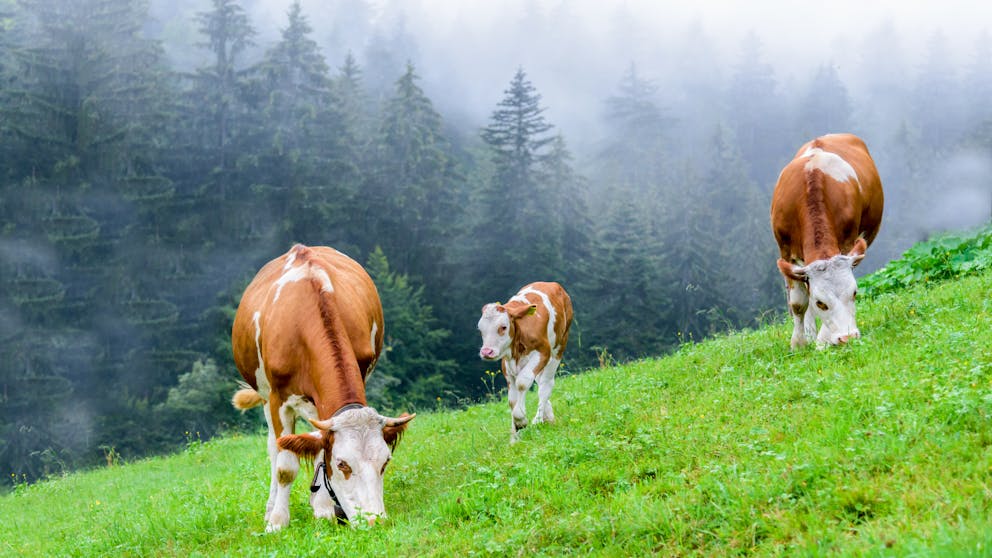Grass Fed vs Grass Finished Beef: Big Difference
Grass-Fed vs Grass-Finished Beef: Decoding the Labels
The nuances of "Grass-Fed vs. Grass-Finished Beef" can be slight, but their implications for animal welfare, environmental impact, and nutrition are remarkable.
This article aims to delve into these distinctions, comprehensively understanding what each term entails.
We will begin by defining 'grass-fed' within the context of beef production and debunking common misconceptions about grass-fed labels. From there, we'll explore the realm of grass-finished beef - what constitutes it and how long it takes to raise a grass-finished cow.
Our discussion will also encompass an overview of the grain-finishing process and its effects on animal health and antibiotic use.
Furthermore, we’ll demystify organic labeling versus grass-finished meat products, highlighting key differences between organic and naturally raised meats.
The final part of our exploration into "Grass-Fed vs Grass-Finished Beef" will focus on a comparative nutrition analysis between these two types of beef products along with potential impacts on human health.
So whether you're interested in making more informed dietary choices or simply curious about cattle grazing practices, this post promises insightful revelations.
Understanding Grass-Fed Beef
When you see the term "grass-fed" on a package of beef, you might think the cow lived its life like a bovine vegetarian. Hold the thought; that's not always accurate.
Defining 'Grass-Fed' in the Context of Beef Production
Contrary to common supposition, cows typically begin their lives grazing and suckling. So when beef is labeled as "grass-fed," it simply means the cow tasted the green stuff at some point. It doesn't guarantee an all-grass diet.
Now, let's talk about GMO grains. Some farmers switch their cows to genetically modified (GMO) grain-based feeds for various reasons, like saving money or dealing with limited pasture availability.

Common misconceptions about grass-fed labels
Here's the scoop: "Grass-fed" doesn't automatically mean organic or hormone-free. Nope, those are separate labels. A cow can chow down on GMO grains and still be called "grass-fed" if it has some grass.
So, don't let buzzwords steer you wrong. Read labels carefully and do your research before assuming what they mean.
Exploring Grass-Finished Beef
Regarding beef, "grass-finished" means cows that eat grass, not grains. No fast food for these cows.
What does "Grass-Finished" mean?
A grass-finished cow only eats its mother's milk and grass from birth to harvest. No feedlots, just open pastures. Grass-finished cows live the good life, roaming freely and enjoying the great outdoors. They're like the cow's version of vacationers.
How long does it take to raise a grass-finished cow?
It takes longer to raise a grass-finished cow, around 24-30 months. They're not in a hurry, taking their sweet time to mature.
Because they take longer to grow, grass-finished beef has a unique flavor. It's like a fancy, earthy taste that'll make your taste buds dance.
Just remember, quality comes at a price. Grass-finished beef may cost a bit more, but it's worth it for the happy cows and delicious meat.
Grain-Finishing Process and Its Effects
The process of grain-finishing cattle is quite different from that of grass-finished ones. Grain-finishing, or feedlot or conventional beef production, involves feeding the cows a diet high in grains such as corn and soy during the last few months before slaughter.
This method aims to fatten up the animals quickly for increased meat yield.
Overview of the Grain-Finishing Process
In a typical grain-finishing setup, calves are weaned off their mother's milk at around six to nine months old. They're then moved into feedlots and fed a concentrated diet primarily composed of grains and hay or silage for roughage.
The high-energy grain-based diet promotes rapid weight gain and marbling (intramuscular fat), which gives the meat its tender texture and rich flavor.
This phase lasts approximately four to six months until the animal reaches market weight, significantly shortening their growth period compared to its grass-finished counterparts.
Impact on Animal Health and Antibiotic Use
The shift from grazing on pasture to consuming large amounts of grains can cause digestive problems in cattle due to increased acid levels within their intestines - a condition known as acidosis. This could lead to liver abscesses, bloating, and lameness, among other health issues.
To mitigate these health risks associated with grain feeding, antibiotics are often administered routinely rather than just when an animal gets sick - a practice that has raised concerns about antibiotic resistance.
Research shows a link between the routine use of antibiotics in livestock farming and rising antibiotic resistance in humans.
Beyond potential health implications for consumers through residual traces found in meat products, there's concern over the environmental impact, mainly due to manure runoff containing these drugs contaminating water sources and potentially harming aquatic life.
Not all farmers utilize this technique; many are devoted to guaranteeing moral treatment while still producing a top-notch item, so it pays to look into the origin of your meat before buying.
Organic Labeling vs Grass-Finished
In pursuit of healthier food choices, we frequently come across terms like 'organic,' 'grass-fed,' and 'grass-finished'; let's demystify these labels to make educated decisions about our meat purchases.
Let's demystify these labels to help you make informed decisions about your meat purchases.
What does 'Organic' mean?
'Organic' means the animals were raised naturally, fed organic feed, and not given antibiotics or hormones. But it doesn't guarantee they were grass-fed or finished.
Differences between Organic and Naturally Raised Meats
'Naturally raised' means no growth hormones were used, but it says nothing about the animal's diet or living conditions. It's like a mystery meat label.
'Grass-fed' beef comes from cattle that ate only grass, but it doesn't guarantee they were grass-finished. It's like a grassy tease.
'Grass-finished' beef means the cows ate grass until slaughter, providing extra nutrients. It's like the gold standard of grassy goodness.
To summarize, Organic means natural but not necessarily grassy. Naturally raised is a mystery meat. Grass-fed is grassy but not always grass-finished. Grass-finished is the real deal. Choose wisely.

Health Implications & Nutritional Differences
The beef battle: grass-fed, grass-finished, and grain-finished. Let's dig into the details to see how they stack up nutritionally and impact our health.
Comparative Nutrition Analysis
Grass-fed and finished beef reigns supreme in the nutrient department. A study in Nutrition Journal revealed that it's packed with heart-healthy omega-3 fatty acids and conjugated linoleic acid (CLA), which fights body fat and brings other benefits.
Beef can be hard to digest, but fatty meats are more accessible than lean meats. Conversely, grain-finishing beef can beef up saturated fat levels and skimp on the good omega-3s. Plus, it tips the scales towards an unhealthy Omega-6 to Omega-3 ratio, inviting inflammation.
Potential Impacts on Human Health
Choosing grass-fed or finished beef means more than just a tasty meal. The extra CLA not only helps with weight loss but also boosts immunity and battles cancer, according to a Lipids in Health Disease journal study.
But wait, there's more. Grain-finished cattle's antibiotic use can lead to antibiotic-resistant bacteria, posing a risk to us meat lovers.
And let's not forget about the environment. Opting for sustainable grass-fed or finished meats reduces our carbon footprint and supports biodiversity through natural grazing patterns.
Conclusion
In conclusion, knowing the difference between grass-fed and grass-finished beef is critical for intelligent food choices - because not all grass-fed beef is grass-finished.
Grain-finishing can harm animal health and lead to more antibiotic use - yikes! And just because the meat is labeled organic doesn't mean it's naturally raised - sneaky, huh?
Regarding nutrition, grass-fed beef may pack a punch with higher omega-3 fatty acids - so it's not just about the taste, folks!
Previous blog
Fasting Appetite and Nutrient LevelsNext blog
Are Whole Grains Destroying Your BrainTags

Popular
08/21/2024
40.8K views
05/22/2024
37.2K views
11/18/2024
216.7K views
03/18/2024
11/21/2022




